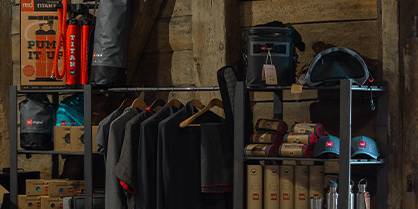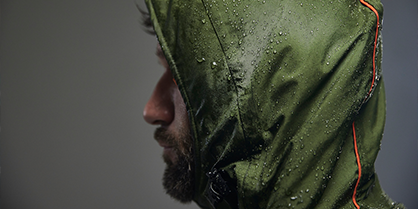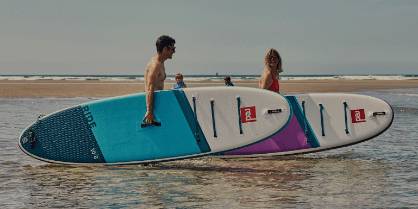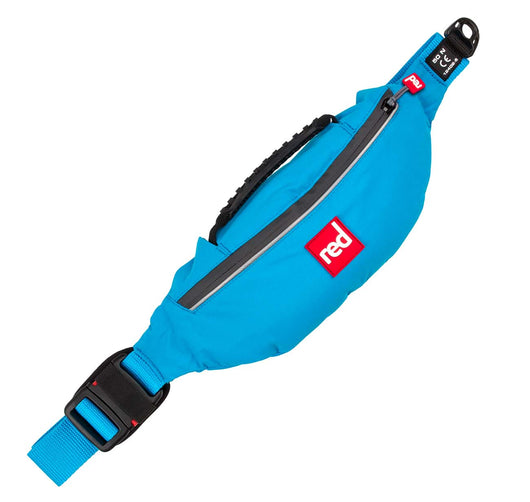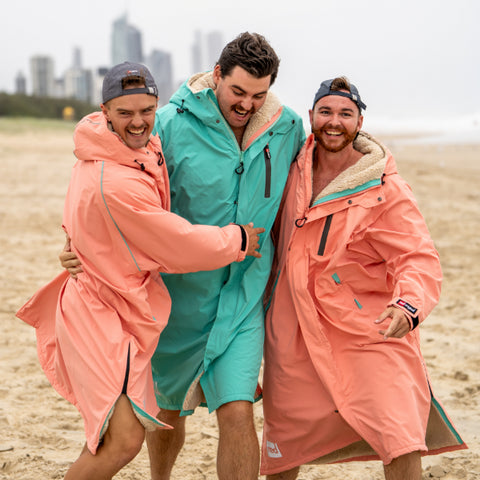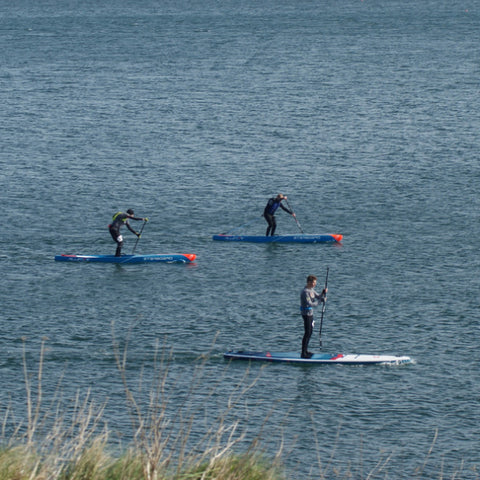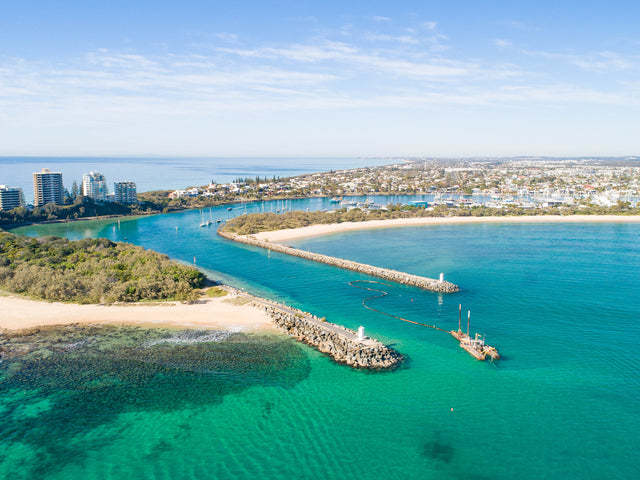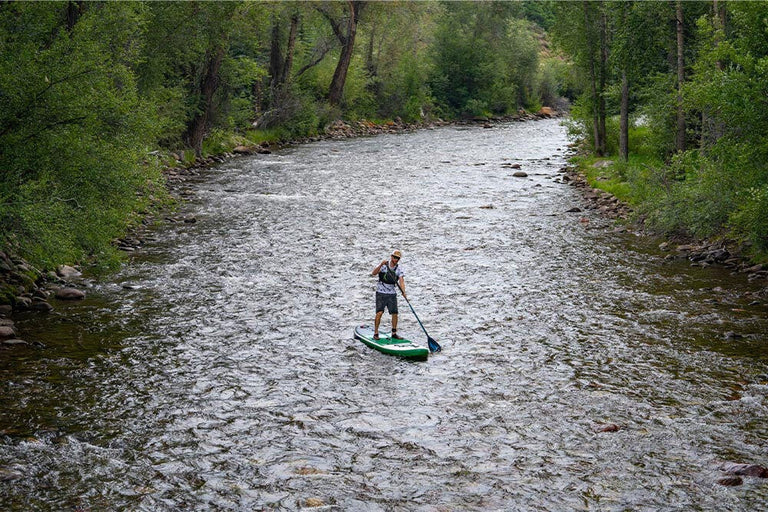
Wherever you plan to go paddle boarding, safety should always be a top priority, however paddle boarding on rivers and tidal estuaries presents its own set of risks. Experience, planning and preparation are key to ensuring a safe and enjoyable session out on the water. So, before you start exploring on your SUP, be sure to consider the following essential paddle boarding safety tips:
If in doubt, don’t go out
This is the best place to start. If you are not sure if the conditions are safe and don’t feel comfortable identifying the hazards then it is best to not go out. It’s much safer to skip a session than take to the water if you are unsure about the current, hazards and imminent conditions.
Do your homework
As tranquil as they might appear, flowing rivers can quickly become dangerous. That’s why one of our most important paddle boarding safety tips is to plan and research your route before you head out. Check the forecast in detail, paying particular attention to wind speed and any recent and imminent rainfall as these can lead to a big increase in the speed of water flow and presence of debris. Tidal activity, locks and weirs can also affect water speed and so this is another important consideration to make when planning your trip. Do you understand the risks of your chosen paddling location?
Use local knowledge
Another of our top paddle boarding safety tips is to use local knowledge. This is one of the most accurate ways to find out about the conditions of the location you’re heading to. Don’t be afraid to ask local paddlers questions to find out about the hidden dangers and risks that you might need to be aware of. A local kayak group is a great place to start if you don’t know any experienced paddle boarders who have been down the same section of water. Kayaking has been around longer than paddle boarding so it is likely that kayakers will have a greater depth of knowledge and experience of your chosen location.
Beware of flooding
One of the biggest risks when paddle boarding on moving rivers is flooding. When rivers flood, water depth becomes a safety issue, however flooding can also create unexpected currents where the water was previously calm and hazards that were once above the waterline are now hidden under the water. When checking the weather forecast, make sure to check thoroughly for any risk of flooding.
Consider your experience level
Due to the risks of paddle boarding on flowing rivers, we would only recommend paddle boarding on rivers if you have built up the necessary experience and skills. If you’re new to paddle boarding we would recommend practising your skills on flat water, non flowing waters and only paddling in rivers and estuaries once you have built up more experience. We highly recommend going with a local guide/group or school with an experienced and qualified instructor to begin with.
Get the right safety equipment
One of our most important paddle boarding safety tips is to make sure you have the necessary safety equipment. As a minimum, wear a 50N personal floatation device (PFD) with a coiled SUP leash attached to our quick release waist belt. The quick release waist belt is essential for allowing you to detach from your board quickly, without having to reach your ankle, in the event of an emergency.
Check your equipment before heading out
Before you leave home, it’s always a sensible idea to check your equipment and make sure it is in good condition. When you arrive at your paddling location, ensure that your inflatable SUP is pumped up to the recommended PSI, your paddle is put together correctly and all your equipment is in good condition. Checking your equipment is an essential paddle boarding safety tip that it’s important not to overlook regardless of your experience or paddling location.
Dress for the weather (and the water!)
Make sure you’re dressed appropriately for the weather but also for the event that you do fall in. If you do get into trouble when out on the water , it’s important that you can stay warm whilst waiting for help. If you are paddle boarding in the winter we would recommend wearing a winter wetsuit with boots, gloves and a hood in case you do end up in the water. A good quality drysuit is also an option.
Take a phone and tell someone where you are going
Always remember to take a communication device with you and if you get into trouble dial 999 and ask for the coastguard. It’s also a good idea to consider downloading an app such as what3words to help pinpoint your location if you get into trouble. Before you head out, let someone know where you’re going and what time you plan to be back, and keep them updated if your plans change. You can keep your phone secure, dry, and attached to your person rather than your board, using our waterproof dry pouch.
Never paddle alone
One of our most important paddle boarding safety tips is to always paddle with a mate. This is particularly important on rivers where conditions can change rapidly. Make sure to paddle with at least one other person. This is an important safety tip, however it also makes your time on the water a whole lot more fun.
Practice makes perfect
Building up your paddling skills will give you more confidence on your SUP, and make you safer. When you get the chance and you’re in calm conditions, it’s always a good idea to practice rescuing yourself. Have a go at getting back on your board with all your kit on and paddling without a fin or paddle, etc.
Stay calm
Last but certainly not least on our list of essential paddle boarding safety tips is to stay calm. In the event that you do run into trouble, it’s important to avoid panicking. Stay with your board if possible and call for help. If you do become separated from your board then ensure you float on your back, and if you can, swim to the bank.

